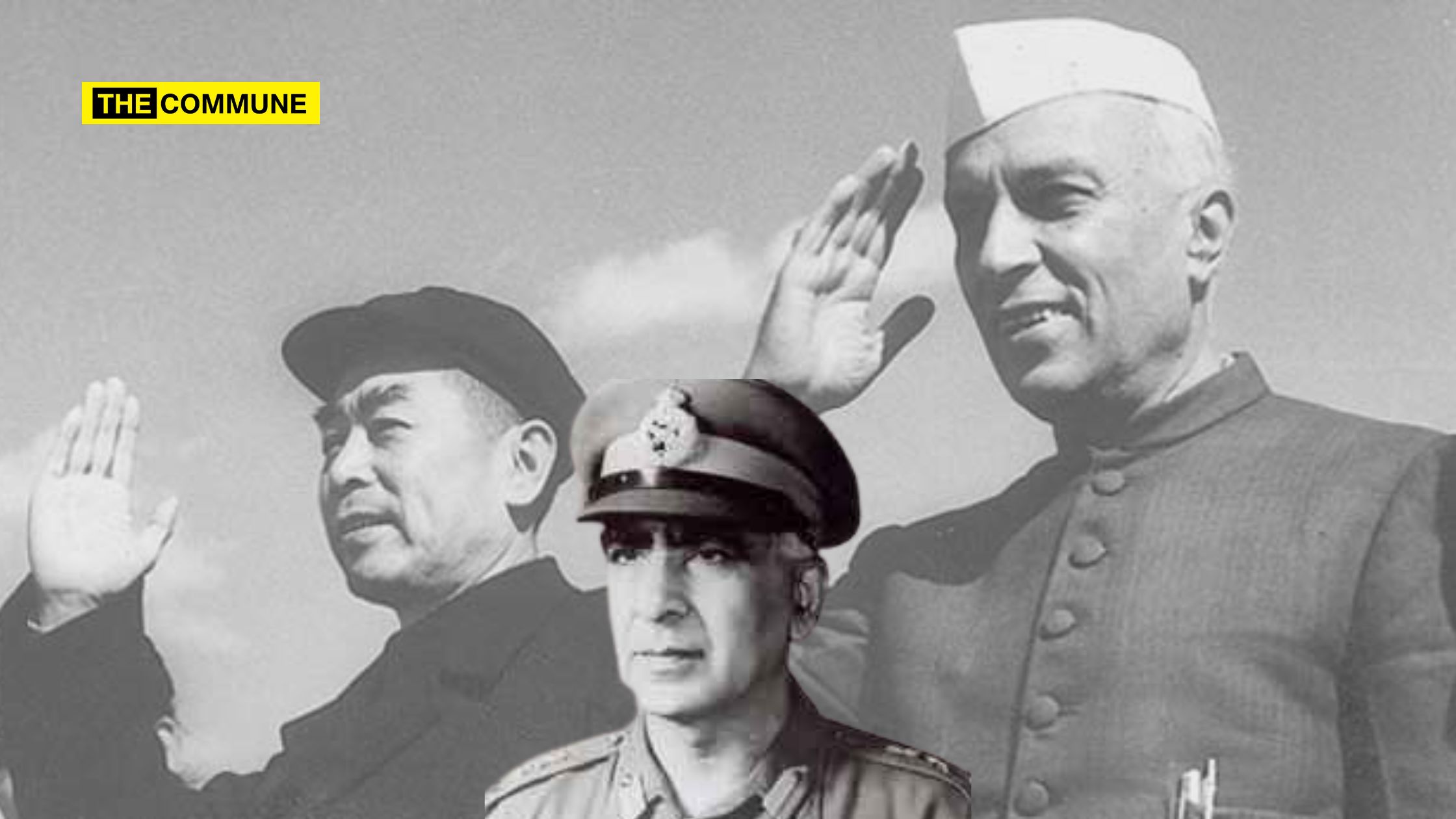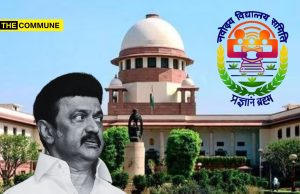
The controversy surrounding leftist propaganda portal NewsClick has exposed how the leftist ecosystem with relationships beyond the borders of India have influence in the Congress party. But this is not a new phenomena and has been prevalent since the time of Jawaharlal Nehru.
Individuals influenced by leftist ideology have walked the corridors of power under the Congress. Former Indian Army Chief of Staff (COAS), General Prem Nath Thapar, who led the Indian Army during the 1962 conflict with China was one such man.
The story goes something like this, Prime Minister Jawaharlal Nehru had a deep mistrust when it came to the military. In fact, after India’s independence, Nehru was of the belief that the country was in no need of a military when the police could provide security.
It was such arrogant naivete and mistrust of the army, that in 1959, he appointed Gen Thapar as the COAS over Lt General SPP Thorat who was recommended by General Kodendera Subayya Thimayya whom he along with then Defence Minister VK Krishna Menon disliked.
Nehru, who by then had achieved demigod status, wanted an army chief who would ply to their whims. Also, General Thapar became a relative when he married Bimla Bashiram Sehgal, sister of Gautam Sahgal, whose wife Nayantara Sahgal was a daughter of Vijayalaxmi Pandit and therefore niece of Jawaharlal Nehru.
In the 1950s, Nehru’s singular ambition was to be known as a great world leader and statesman, and for that to happen, he would go to great lengths. For example, he refused, twice when India was offered a seat as a permanent member of the United Nations Security Council in favor of China.
Other examples are his needless seeking of UN interference in Kashmir, the loss of Aksai Chin, and the Indus Water Treaty. Nehru believed that by using soft power, diplomacy, and appeasement he would be regarded as the messiah of world peace in the post-Second World War, post-colonial Cold War period.
However, by not listening to the advice given by General Thimayya who wanted Gen Thorat to take over, Nehru was responsible for India’s loss in 1962.
Instead, Nehru superseded six officers and appointed Lieutenant General Brij Mohan Kaul as the Chief of General Staff from 1961–1962.
Kaul’s meteoric advancement was clearly not based entirely on merit or on the basis of his Service dossier. Competent observers were of the opinion that Menon’s aim was to clear the way for him to succeed Thapar as the Army Chief. No one doubted that it was Kaul who would run the Army, with Thapar as the amiable, nominal Chief.
General Thorat was called a man of great character and strategic vision and he will remain one of the best Army Chiefs India ever had. Having closely assessed Chinese military tactics when he was the chief of the Custodian Force of India he rightly predicted as early as 1959, that China had designs in Tibet.
In the book The Unfought War of 1962: An Appraisal, by Raghav Sharan Sharma, he mentions that Lt General B.M. Kaul was a distant relation of Indian Prime Minister Jawaharlal Nehru and VK Krishna Menon who was the then Defence Minister appointed Lt General B.M. Kaul as Chief of General Staff, against the recommendation of the outgoing Chief of Army Staff, General K.S.Thimayya. The reason Gen Thimayya had opposed Kaul was he was an Army Service Corps officer, with no prior combat experience and had never commanded a fighting unit earlier
This was the beginning of the end and as it is mentioned in the book, The Himalayan Blunder, “With the eclipse of General Thimayya, General Thorat’s claims to be the Chief were waived aside and General Thapar’s seniority was invoked to promote him, in April 1961. General S. D. Verma, who was commanding Ladakh and who held similar views to General Thorat, was superseded, his seniority being ignored. The truth is that officers who opposed the indiscriminate opening of posts were ear-marked for elimination. There was no room for practical, professional views in Mr. Nehru’s quest for political survival in the face of a militant Opposition. In April 1961 General Thimayya was retired, General Thorat was pensioned off and General Verma, a man of principle, resigned immediately he was superseded” (Page 73, 74, The Himalayan Blunder Brig John Dalvi)
As mentioned, Nehru had deep suspension of the military and in the name of development, he ignored the need of the armed forces. How they operated with limited resources and materials is another story altogether. After Generals Thorat and Verma were pensioned off at a time when India was in need of “surplus military talent”, Nehru should be held responsible to have dispensed with the services of these capable men. In many ways, the symptomatic advancement of Gen Thapar and the elevation of Gen Kaul as the COAS was of India’s limited preparations for war with China. In 1962, the Indian military was led by men who were inadequate.
The story of Gen Kaul and General Thapar are intertwined as both manage to curry favor from Nehru.
Here is an excerpt from the book, The Himalayan Blunder:
“He (Kaul) managed to keep himself away from hardship and learning the nuances of a military commander as a junior officer and later in service, managed to grab important Army senior command appointments due to his “pull”. His involvement with Jawaharlal Nehru later turned out to be a major reason for the shameful loss and massacre of Indian troops at the hands of the Chinese”
K. Satchidananda Murty wrote a biographical book about President Sarvepalli Radhakrishnan, named Radhakrishnan: His Life and Ideas. In the book, he quoted the former president as having expressed doubts over the capability of Lt General B.M. Kaul.
Excerpt from the book:
“The General Officer was well known in the Army and Political Circles to be a “personal favorite” of Jawaharlal Nehru since his junior officer days. He reportedly received a number of undue professional favors throughout his career due to this personal connection and he made full use of this opportunity with utter disregard to the Army organisation”.
To end, as Brig Brig John Dalvi writes, “A Chief must act fearlessly both in peace and war, especially if he is being hustled into a military course which he feels may land the nation in disaster. To put it mildly, Gen. Thapar’s tenure was notable only for his conformity with the prevailing mood of Government. He foresaw the impending doom but was too helpless to influence events. The Nehru-Menon-Thimayya episode of 1959 had far-reach effects on the authority and role of the Service Chief”.
The Thapar Family
It all starts with his father, Dewan Bahadur Kunj Behari Thapar of Lahore who had made his fortune during the First World War as a commission agent for the colonial British Indian Army. However, the loyalty of Dewan Bahadur Kunj Behari Thapar was tested on April 13, 1919, after the Jallianwala Bagh massacre, also known as the Amritsar massacre.
Such was his loyalty, on the same evening after the massacre and as a member of the Golden Temple management (the predecessor of the SGPC) Gen Reginald Dyer was presented Dyer with a Kirpan (sword) and a Siropa (turban) along with Rs. 1.75 Lakhs contributed by Kunj Bihari Thapar and others. (As per this report in India Today.)
For his loyalty, Kunj Behari Thapar was awarded the Most Excellent Order of the British Empire in 1920. (Copy of the Edinburgh Gazette).
As the family was rich, powerful, and influential, it is not beyond the realm of possibility one of his sons Pran Nath Thapar received an appointment at the Royal Military College, Sandhurst, passing out on 4 February 1926 as a second lieutenant.
During the height of the 1962 war, the Indian Air Force wanted to bomb the Chinese army positions which according to many in the Air Force, Gen Thapar overruled as he had the support of Defence Minister VK Krishna Menon. Even today, India enjoys significant air superiority over Tibet against the Chinese air force.
Such decisions finally led to the routing of the Indian army that had fought valiantly. Thapar who had resigned in disgrace was later appointed as Indian Ambassador to Afghanistan from August 1964 to January 1969.
But for India, the family’s shadow post-independence was still long. His son is Indian journalist Karan Thapar and his niece is none other than Historian Romilla Thapar who was one of the key architects in undermining the findings of the Archaeological Survey of India in the Ayodhya Ram Temple case.
The Thapar family is mostly of the leftist ideology but has always lived life like a feudal lord.
(With inputs from Hindu Post)
(Balaji is a political commentator and columnist. He tweets at @LaxmanShriram78)
Subscribe to our channels on Telegram and WhatsApp and get the best stories of the day delivered to you personally.




